John Cage answers 19 questions on a variety of subjets using chance operations to determine the duration of his answers. From the film ‘From zero’, by Frank Scheffer.
“Rufen bis zur Erschöpfung (Calling to the Point of Exhaustion)”, 1972 by Jochen Gerz.
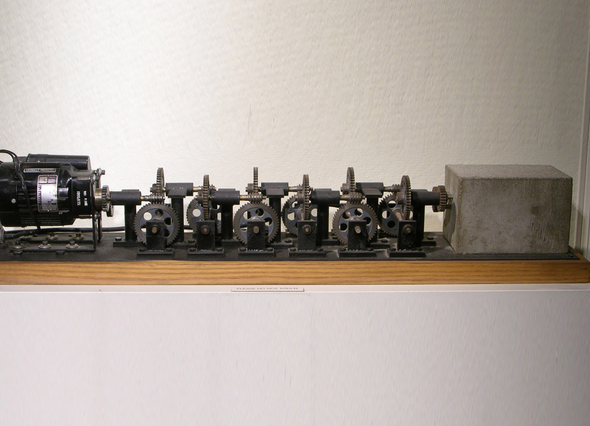
“Machine with concrete”, 1992 by Athur Ganson. The speed at which the cogwheels turn is slowed down by 12 pairs of reductors. The last cogwheel needs two trillion years to complete one rotation (video).

“Cheese”, 2000 by Christian Moeller. On camera, six actresses each try to hold a smile for as long as they could, up to one and half hours. Each ongoing smile is scrutinized by a emotion recognition system and whenever the display of happiness fell below a certain threshold, an alarm alerted them to show more sincerity.
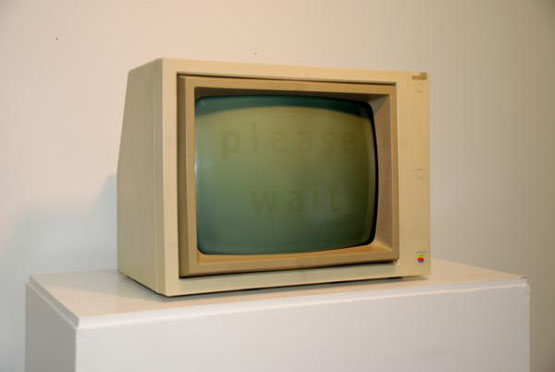
»Screen Burn (please wait)«, 2005. Steven Read wrote a software program in Apple II Integer Basic that displays an image on the monitor’s screen. Then he ran the program continuously for about 6 months. The software image was eventually burned into the screen because the internal phosphor compounds which emit light lost their luminosity and left behind a ghostly trace. The ‘please wait’ text is actually an image which took over 1000 lines of software code to create. The old Apple II operating systems (DOS 3.x, ProDOS, etc.) did not come with any font facilities, if you wanted a font you had to code it from scratch.
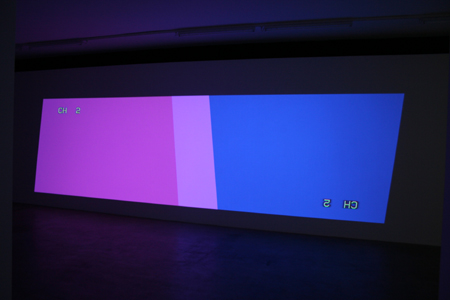
»Two Keystoned Projectors (one upside down)« (2007) and
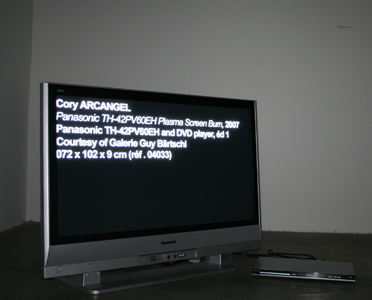
»Panasonic TH42PV60 Plasma Screen Burn« (2007) by Cory Arcangel at Galerie Guy Bärtschi.
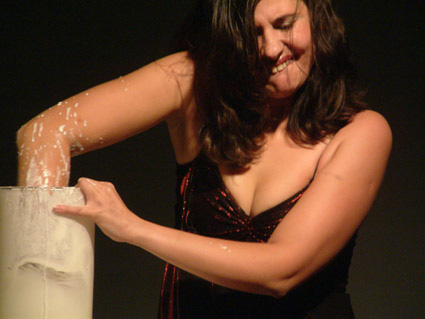
“Crema” – Nezaket Ekici turns fluidly cream to butter. Duration of the performance: 20 min.

»HUO Drawings«. In spring of 2003 Charles Gute had the privilege of proofreading Hans Ulrich Obrist’s Interviews: Volume 1. With an awareness of the author’s art world stature, paired with a name that seems to have a greater-than-average vulnerability to typographic inconsistency, these drawings were created as a kind of cathartic antidote.
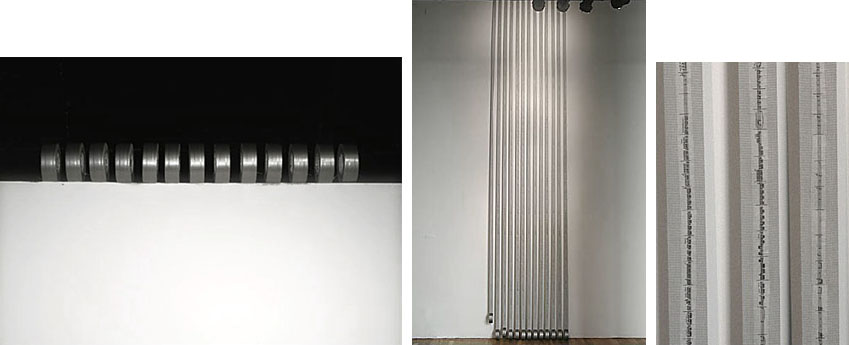
»Dutch Tape Funeral March (Marcia Funebre from Symphony No. 3, “Eroica”)«. The work consists of 13 rolls of duct tape initially placed at the top of the 16-foot-high gallery wall. On the day of the opening the rolls of tape were released so that they could “roll” down the wall under their own weight, a process that took over 8 hours to complete. As the tape reached mid-wall, viewers were able to see that there was a continuous strip of sheet music attached to the adhesive side of each roll. This sheet music was an actual transcription of the second movement of Beethoven’s Third Symphony, also known as the “Funeral March,” the linear length of which had been scaled to fit the 16-foot span from ceiling to floor. One of each of the 13 orchestral parts from the original score had been applied to each of the 13 rolls of tape, effecting a kind of super-slow automated performance of Beethoven’s somber work.

»Ant Climb Study #2« (video still) is a perceptual study of duration and movement. Here a live ant climbs the adhesive side of a length of masking tape. Appearing as an abstract mark, the ant’s progress is steady yet nearly imperceptable, akin to the movement of a minute hand on a clock. All projects by Charles Gute.
